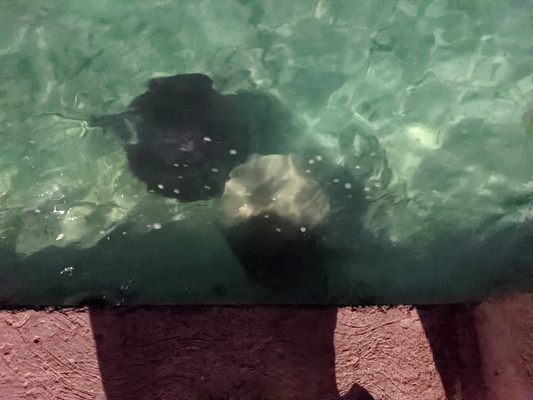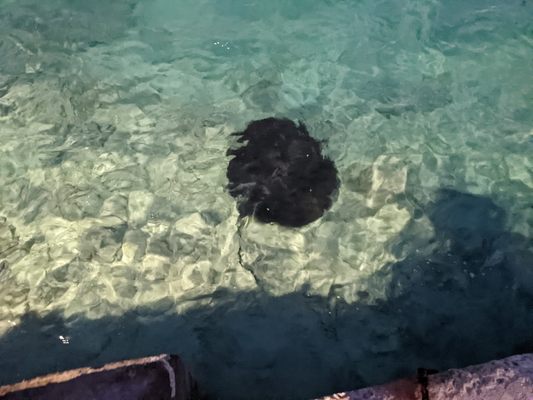About
A small, open-air concrete building sits beside a palm tree at the east edge of Dharavandhoo’s pocket-sized harbor. A sign announces it as the island’s fish market, but it’s nothing like the bustling trade halls of Tokyo’s Toyosu or Seattle’s touristy Pike Place. Here, no money changes hands, and the diverse customers take whatever they’re offered, no haggling necessary.
“Reef sharks, stingrays, sometimes nurse sharks up to three meters long,” says Ahmed Mahzoom, listing the fish that gather in the water at the harbor wall’s base. Mahzoom works at one of the handful of modest hotels and guesthouses on the tiny island, which is part of the Maldives’ Baa Atoll and home to about 800 people. From May to November, Dharavandhoo is a hub for tourists eager to see massive gatherings of manta rays in nearby Hanifaru Bay. It’s also popular year-round with divers and snorkelers in search of octopuses, moray eels, turtles, and more. But at the Dharavandhoo Fish Market, the fish come to you.
In late afternoon, families gather along the harbor wall behind the market building, often grandparents with teens and children in tow. They handline fish, unspooling line from around a repurposed plastic bottle and tossing baited hooks from the wall’s concrete edge. If something bites, the fisher brings the line in, quickly wrapping it around the bottle, while their assistant waits with a net. Groupers, jacks, and other meaty reef fish are kept, but slender cornetfish and smaller species get thrown back. As daylight fades, the fishers and their families carry buckets with their catch into the market building, a tidy place with rows of filleting stations, sinks, and pump bottles of hand sanitizer. Meanwhile, the fish market’s customers gather outside.
The sandy bottom and bright harbor lights make it easy to see the arrivals: one, then two, then six stingrays on this night, circling patiently just below the surface. Cowtail stingrays and paler porcupine rays glide around and over each other in a slow ballet of patience as they wait for dinner. A heron, also interested in what’s on the menu, perches on a nearby jetty.
As the fishers gut their catch and toss the remains back into the water, the rays take turns surfacing, snacking, and then circling back to the end of the line in hopes of more morsels. The stretch of water illuminated by the harbor lights turns into a synchronized swimming performance. Even when sharks show up, locals say it’s an orderly affair.
Night falls as the fishers prep the last of the day’s catch and pack it up to take home. The final handful of tails and innards is thrown into the water and a waiting ray takes it with barely a ripple. As the families leave the fish market, so do the rays, swimming into the darker waters beyond the harbor’s glow.
Related Tags
Community Contributors
Added By
Published
January 25, 2022


































